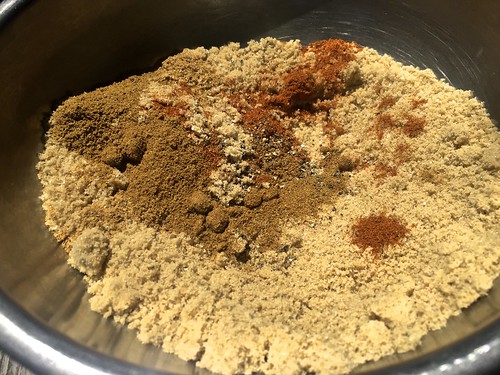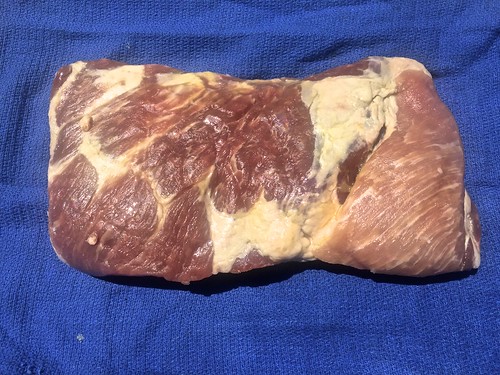Time to post my suggestions about taking advantage of summer's bounty.
Difficult to believe, summer is winding down. Even as the heat of the sun makes us wonder if summer will ever end, as the saying goes, "Winter is coming."
Walking through the farmers markets, I see a great abundance of tomatoes. With that abundance comes lower prices. Find a farmer who has too much of a good thing and the price comes down even more.
"Reduced to sell." "Soft ready to eat." Those are the tomatoes I look for. I'll buy them by the bagful. Five or ten pounds at a time. My plan is to prepare for a time when fresh tomatoes are a thing of the past.
I am anticipating a time when storm clouds are outside and I'm staring into the refrigerator looking for inspiration. I yearn for the produce of summer:
leafy greens, corn and full-bodied tomatoes. But there is a way to enjoy the sweet-acidic deliciousness of tomatoes even in the darkest days of winter. Just look in your freezer.
With abundant tomatoes in the farmers markets, buy ripe tomatoes, roast and freeze them to be used in
braises, soups and sauces in the fall and winter. Once blasted with heat in the oven, the tomatoes happily take to the freezer if they are covered in liquid.
Enjoy frozen
roasted tomatoes whole or puree into sauce, and as rain beats against your windows and snow accumulates on your lawn, you will remember those heady summer flavors.
Oven-roasted tomatoes to use as a side dish or in sauces
Use ripe and over-ripe tomatoes. If you can find only unripe, hard tomatoes, leave them in a sunny spot on the kitchen counter until they ripen. Bruised tomatoes are OK as long as you use a sharp paring knife to remove the damaged parts. Avoid tomatoes with broken skin because of the risk of mold.
Any kind of tomato can be used: heirloom, Roma, cherry, large or small salad tomatoes.
A food mill is helpful when making the sauce. If one is not available, a fine meshed wire strainer will do almost as well.
When roasting the tomatoes, it is important to use parchment paper or a nonstick Silpat mat to prevent the tomatoes from sticking to the baking sheet. With a Silpat mat, none of the good bits and sweetly-delicious liquids that caramelize on the bottom are wasted.
Roasted Tomatoes
Tomatoes love the sun’s heat when they’re growing. And they love the oven’s heat that coaxes a rich umami sweetness out of their naturally acidic souls.
That sweetness is at the heart of the roasted tomatoes that will be in your freezer.
Prep time: 5 minutes
Roasting time: 60 minutes
Yield: 1 to 2 quarts
Ingredients
5 pounds tomatoes, washed, patted dry
1 tablespoon olive oil
¼ teaspoon sea salt
¼ teaspoon freshly ground black pepper
Directions
1. Preheat oven to 350 F.
2. Line a large baking sheet with a Silpat mat or parchment paper cut to size. Use a baking sheet with a 1-inch lip to capture any liquids created during roasting.
3. Use a sharp paring knife to cut a “V” shape around the stem, remove and discard. With cherry tomatoes, any stems can be brushed off the surface without making a cut.
4. Place the de-stemmed tomatoes on the lined baking sheet, stem side up.
5. Drizzle with olive oil and season with sea salt and pepper.
6. Place in oven and roast 60 minutes.
7. Remove and let cool.
Freezing Whole Roasted Tomatoes
When you remove the baking sheet from the oven, you’ll notice a clear liquid has accumulated on the bottom. Some of that is olive oil. But most of the liquid is a clear tomato essence prized by chefs for its clean flavor.
If you are freezing some of the roasted tomatoes whole, use the clear liquid to cover the tomatoes in the deli containers.
Use airtight containers that are about the same width as the tomatoes so you will need a small amount of liquid to cover them.
Defrosting Whole Roasted Tomatoes
When you want to use the tomatoes, take them out of the freezer in the evening and let them defrost overnight. If any ice crystals have accumulated on top of the tomatoes, rinse off the ice before defrosting.
If you want to serve them whole, the tomatoes can be warmed in the oven or microwave. They are delicate, so handle them carefully.
Whole Roasted Tomato, Easy-to-Make Pasta Sauce
A deliciously simple pasta sauce to make any time of the year, not just in winter. Serve the pasta with steamed vegetables, a charred steak or a grilled chicken breast and you will have a perfect cold weather meal that warms body and soul.
The flavorful tomato sauce can become a vegan dish by simply omitting the butter and cheese.
Prep time: 5 minutes
Sauté time: 5 minutes
Pasta cooking time: 10 minutes
Total time: 10 minutes
Ingredients
1 tablespoon sea salt
1 pound fresh or packaged pasta
1 tablespoon olive oil
1 cup Italian parsley leaves, washed, roughly chopped (optional)
1 garlic clove, peeled, finely chopped
2 to 3 whole, large roasted tomatoes, skins removed
1 teaspoon sweet butter (optional)
Freshly ground black pepper to taste
1 cup freshly grated Parmesan or Romano cheese
Sea salt and freshly ground black pepper to taste
Directions
1. Place a large pot of water on high heat. Add 1 tablespoon sea salt to the water. Bring to a boil. Add the pasta. Stir well every 2 to 3 minutes.
2. Place a heat-proof cup in the sink next to a large strainer. When the pasta is al dente to your taste, about 10 minutes, pour the pasta into the strainer, capturing one cup of the salted pasta water. Reserve.
3. Toss the cooked pasta to prevent clumping.
4. At the same time the pasta is cooking, place a large sauté pan on a medium-high flame. Heat the olive oil.
5. Add the parsley and garlic. Lightly brown.
6. Holding the roasted tomatoes over the sauté pan, use your hands to tear them apart so you capture all the liquid. Add any liquid from the deli container.
7. Stir well and cook until the liquid is reduced by half.
8. Taste and salt, if needed; add a tablespoon or more of the pasta water.
9. Stir well and add butter. Taste and adjust seasoning by adding sea salt and black pepper.
10. When ready to serve, add the cooked pasta to the sauté pan. Over a medium flame, toss the pasta in the sauce to coat.
11. Serve hot with a bowl of Romano or Parmesan cheese.
Roasted Tomato Sauce
The tomatoes used to make the sauce are prepared and roasted in the same manner as those used to create whole roasted tomatoes.
Directions
1. Working with small batches, remove the roasted tomatoes from the baking sheet and put some of the roasted tomatoes into a food mill or fine mesh, wire strainer placed over a nonreactive bowl. Press the tomatoes through, collecting all the juice in the bowl.
2. Use a spatula to scrape off the pulp that will accumulate on the bottom of the food mill or the strainer. Add the pulp to the juice.
3. Discard the tomato skins. Or add to your compost. Or, even better, reserve in the freezer to use with other vegetable scraps to make vegetable stock.
Freezing Roasted Tomato Sauce
Put the open deli containers on a counter. Stir the tomato juice to mix with the pulp.
Fill each deli container to a half-inch below the top so that when the sauce freezes, the liquid will have room to expand and will not force open the lid.
When cooled, the filled containers can be placed in the freezer.
Defrosting Roasted Tomato Sauce
Even without defrosting, the frozen sauce can be used at the last minute, when you want to thicken a soup, add a layer of flavor to a braise or make a simple pasta sauce.
There are infinite ways to use this versatile sauce. One of my favorites is an easy-to-make pasta with sautéed vegetables.
If any ice crystals accumulate on the top of the sauce, rinse off the ice before defrosting.
Penne Pasta With Roasted Tomato Sauce and Sautéed Vegetables
Prep time: 10 minutes
Sauté time: 10 minutes
Pasta cooking time: 10 minutes
Total cooking time: 20 minutes
Yield: 4 servings
Ingredients
1 tablespoon sea salt
1 pound fresh or packaged pasta
2 tablespoons olive oil
2 carrots, washed, stems removed, peeled, cut into rounds
1 medium yellow onion, washed, stems removed, peeled, roughly chopped
8 large shiitake mushrooms, ends of the stems removed, washed, patted dry, roughly chopped
2 cups broccolini or broccoli, washed, cut into florets, the stems cut into slabs
2 garlic cloves, peeled, smashed, finely chopped
12 ounces frozen tomato sauce, defrosted on the counter overnight
1 tablespoon sweet butter (optional)
¼ teaspoon pepper flakes or pinch of cayenne (optional)
Sea salt and freshly ground black pepper to taste
1 cup freshly grated Parmesan or Romano cheese
Directions
1. Place a large pot of water on high heat. Add 1 tablespoon sea salt to the water. Bring to a boil. Add the pasta. Stir well every 2 to 3 minutes.
2. Place a heat-proof cup in the sink next to a large strainer. When the pasta is al dente to your taste, pour the pasta into the strainer, capturing one cup of the salted pasta water. Reserve.
3. Toss the cooked pasta to prevent clumping.
4. At the same time the pasta is cooking, place a large sauté pan on a medium flame.
5. Heat the olive oil.
6. Add carrots, onion, shiitake mushrooms, broccolini and garlic. Sauté until lightly browned.
7. Add roasted tomato sauce, butter and pepper flakes. Stir well. Taste. If salt is needed, add a tablespoon or more of the pasta water.
8. Simmer on a medium flame and reduce.
9. Taste, adjust seasoning and continue simmering if you want the sauce to be thicker.
10. When the sauce is the consistency you like, add the cooked pasta, coat well.
11. Taste and adjust the seasoning with more sea salt or black pepper.
12. Serve hot with a bowl of grated Parmesan or Romano cheese.






















